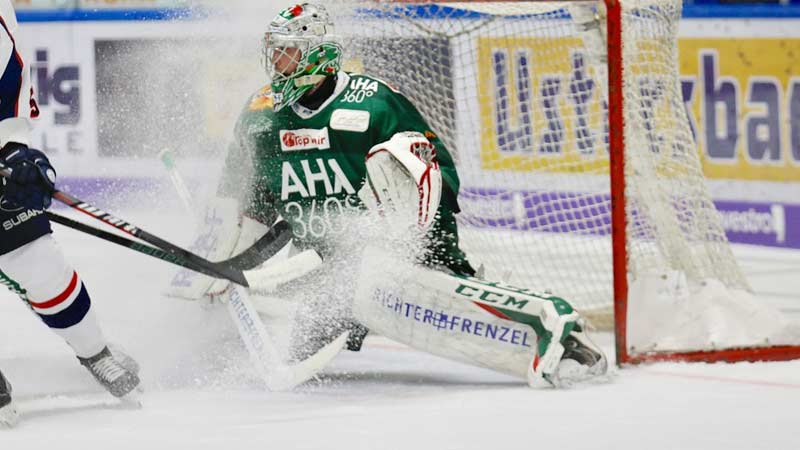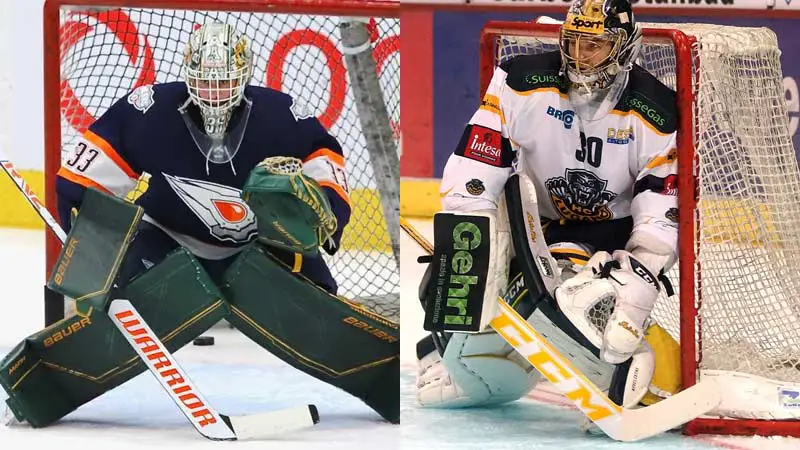Welcome to the world of hockey goaltending, where every save counts towards victory. Understanding the significance of a goalie’s save percentage is key to evaluating their performance on the ice.
Whether you’re a devoted fan, a passionate player, or a dedicated coach, delving into the realm of save percentages can provide valuable insights into a goalie’s effectiveness.
Save percentage (SV) serves as a crucial metric in hockey, reflecting the goalie’s ability to thwart incoming shots. Expressed as a ratio or a decimal, this statistic showcases the goalkeeper’s skill in stopping the puck.
As the NHL season unfolds, fans and analysts alike are eager to identify the top performers and those facing challenges. Determining what constitutes a good save percentage is essential in assessing a goalie’s impact on the game.
Understanding Save Percentage in Hockey
The Basic Save Percentage Formula
In hockey, the save percentage (SV%) is a fundamental statistic used to evaluate a goalie’s performance on the ice.
It is a numerical representation of the goalie’s ability to stop shots made by the opposing team. The formula for calculating save percentage is simple: divide the total number of saves made by the goalie by the total number of shots faced, excluding empty net goals.
Shot on Goal: What Counts?
In hockey, a shot on goal is officially counted when one of two scenarios occurs: first, when a goalie successfully saves a puck, preventing it from entering the net, and second, when a puck enters the net, regardless of whether or not the goalie made an attempt to save it.
It’s important to note that shots that hit the goalpost without first touching the goalie are not considered official shots on goal and should not be included in the total shot count for the goalie’s save percentage calculation.
Analyzing a Good Save Percentage

Historical NHL Benchmarks
When evaluating a goalie’s performance, historical NHL benchmarks play a crucial role in understanding what constitutes a good save percentage.
Over time, the league has established standards that goalies aim to meet or surpass in order to be considered effective in their position.
While save percentage expectations can vary slightly from season to season, goalies generally strive to achieve a save percentage of at least 0.915 or higher.
This benchmark provides a yardstick for assessing a goalie’s effectiveness at stopping shots and influencing game outcomes.
Contextual Factors Impacting Save Percentage
Contextual factors like team defense, shot quality, and a goalie’s skill level can affect their save percentage in hockey.
A strong defensive team can lead to fewer high-quality shots against the goalie, resulting in a higher save percentage. Conversely, facing many high-danger shots can lower a goalie’s save percentage even if they are skilled.
Factors such as fatigue from playing many games and overall team performance can also impact a goalie’s consistency and confidence, influencing their save percentage over the season.
Save Percentage vs. Goals Against Average (GAA)

Preserving the importance of save percentage highlighted earlier, the focus now shifts to comparing Save Percentage with Goals Against Average (GAA) in evaluating a hockey goalie’s performance.
Calculating GAA
Goals Against Average (GAA) stands as a traditional metric that quantifies the average number of goals a goalie allows per game.
It is computed by dividing the total number of goals conceded by the total minutes played and multiplying that number by 60.
In contrast to Save Percentage, which solely reflects a goalie’s ability to stop shots, GAA considers the correlation between playing time and goals against.
Which Metric Offers More Insight?
While GAA has long been celebrated as a premier indicator of a goalie’s performance, Save Percentage has gained prominence due to its emphasis on shot-stopping proficiency.
Generally, a goalie with a GAA below 2.00 is expected to maintain a Save Percentage above 0.910.
Therefore, while GAA provides insight into a goalie’s ability to limit goals, Save Percentage offers a clearer picture of their shot-stopping prowess and overall effectiveness in defensive play.
Interpreting Save Percentage Statistics
Role of Defense in a Goalie’s Stats
In hockey, a goalie’s save percentage is not solely dependent on their individual skills. The performance of the team’s defense also plays a crucial role in determining this statistic.
A strong defense can help reduce the number of high-quality shots faced by the goalie, positively impacting their save percentage.
Conversely, a weak defense that allows numerous scoring opportunities can lead to a lower save percentage for the goalie, even if they make exceptional saves.
How League Trends Affect Save Percentages
Save percentages in hockey are influenced by league-wide trends and playing styles. As the game evolves, strategies change, affecting the types of shots goalies face.
For instance, in eras where scoring is higher, goalies may have lower save percentages due to facing more challenging shots.
Understanding these trends is essential for evaluating a goalie’s save percentage accurately and gauging their performance relative to the current state of the league.
Practical Guide to Calculating Save Percentage
Step-by-Step Calculation
To calculate the save percentage of a hockey goalie, the process involves a simple formula that considers the number of saves made and the total shots faced. The formula for save percentage is:
Save Percentage = (Saves / Shots Faced) x 100%
By following these steps, anyone can accurately determine a goalie’s save percentage:
- Collect Data: Begin by gathering the necessary data, including the number of saves the goalie has made and the total shots faced during a game or a specified period.
- Apply the Formula: Plug the gathered values into the formula mentioned above. Divide the total number of saves by the total shots faced and multiply the result by 100% to obtain the save percentage.
- Interpretation: The resulting percentage indicates the proportion of shots that the goalie successfully stopped out of the total shots faced.
Tools and Resources
When calculating save percentage, one can make use of various tools and resources to streamline the process and ensure accuracy. Here are some valuable tools and resources available to assist in calculating save percentage effectively:
- Save Percentage Calculator: Online calculators designed specifically for determining save percentage can be utilized for quick and accurate calculations. These tools eliminate manual errors and provide instant results.
- Statistical Tracking Software: Advanced statistical tracking software used by teams and analysts offer comprehensive insights into a goalie’s performance, including save percentage. These software solutions automate the calculation process and provide in-depth statistical analysis.
- League Statistics: Accessing league-wide statistics and databases can provide valuable benchmarks for comparing a goalie’s save percentage against average and elite performers in the league. These resources aid in understanding where a goalie stands relative to their peers.
By utilizing these tools and resources, individuals can efficiently calculate and analyze save percentage, gaining a deeper understanding of a goalie’s shot-stopping capabilities and performance on the ice.
Frequently Asked Questions
How significant is save percentage in evaluating a hockey goalie’s performance?
Save percentage is a crucial metric in assessing a hockey goalie’s performance, measuring the percentage of shots stopped by the goalie. It considers factors like team defense and individual skill, providing insights into the goalie’s effectiveness at stopping pucks.
What factors influence a goalie’s save percentage?
A goalie’s save percentage is influenced by various factors, including defensive support from the team, the goalie’s positioning and technique, shot quality faced, and overall communication on the ice. These factors collectively impact the goalie’s ability to stop shots and maintain a high save percentage.
How can I calculate save percentage for a hockey goalie?
To calculate a goalie’s save percentage, divide the number of saves by the total number of shots on goal faced by the goalie. Multiply the result by 100 to get the save percentage. This calculation provides a clear understanding of the goalie’s shot-stopping abilities and performance on the ice.
What tools can I use to analyze a goalie’s save percentage?
You can utilize online calculators, statistical tracking software, and league statistics to analyze a goalie’s save percentage accurately. These tools offer a practical guide to understanding the nuances of save percentage, helping individuals gain deeper insights into a goalie’s performance and overall impact on the game.
Conclusion
Understanding the importance of save percentage in hockey is crucial for accurately assessing a goalie’s performance.
By delving into the intricacies of save percentage versus Goals Against Average (GAA), readers can grasp the nuances that impact a goalie’s statistics.
The practical guide provided offers a systematic approach to calculating save percentage, empowering individuals with the tools needed for comprehensive analysis.
Leveraging online calculators, statistical tracking software, and league data enhances the evaluation of a goalie’s abilities on the ice.
Embracing these insights elevates the understanding of a goalie’s shot-stopping proficiency, paving the way for informed assessments and strategic decisions in the realm of hockey goaltending.





James Felix